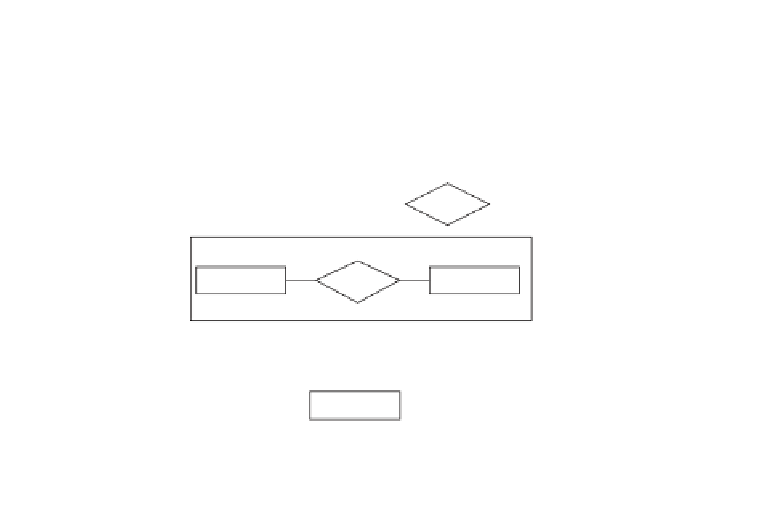Database Reference
In-Depth Information
PymntNo
PymntNo
Amount
Amount
1
PATIENT
PROVIDER
PAYMENT
PAYMENT
*
pays
pays
InvNo
*
*
PATIENT
STATEMENT
PROVIDER
INVOICE
StmtNo
*
receives
ProvID
StmtDate
1
1
1
InvAmt
PROVIDER
StmtAmt
bills
invoices
*
1
ProvName
VISIT
DrID
PatientID
*
PATIENT
DOCTOR
DrName
visits
*
Name
DrPhone
1
Address
VisitNo
includes
VisitDate
*
ServiceNo
SERVICE
SrvcAmt
PrcName
PROCEDURE
TEST
TstName
Figure 6-3
Model diagram: medical practice.
This is an aggregate object. See the explanation of aggregate objects in a later sub-
section.
Attributes
Review the ellipses attached to each object. These are the inherent or
intrinsic characteristics of the objects. Each attribute is a basic property of the object
to which it is connected. Note also that only the characteristics that are relevant to
the initial information requirements are included.
Identifiers
Note the ellipses containing attribute names that are underlined. Each
such ellipse denotes the identifier for the particular object.
Relationships
Look at all diamonds and the lines connecting pairs of objects.
These are the direct relationships. What are direct relationships? Consider the
object PROVIDER PAYMENT. Of course, this payment pertains to a visit by a
patient. Nevertheless, the payment is directly related only to invoice sent to the
third-party insurance provider. The relationship of a payment from a provider to
the patient is an indirect relationship. The model diagram only needs to show the
direct relationships. The indirect relationships may be derived from the direct rela-
tionships displayed in the diagram.
Cardinalities
Note the numbers marked along the relationship lines. Number to
show cardinalities at either side of the diamonds for the above relationships. An
























Search WWH ::

Custom Search